Creating space for nature
How to feed wildlife – naturally
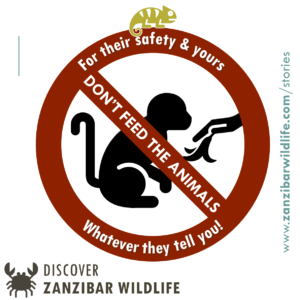
When should we feed wildlife?
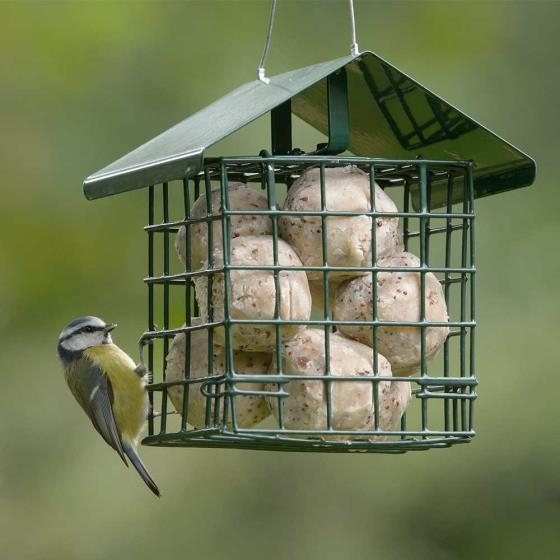
British bird conservation experts warmly encourage members of the public to feed garden birds – especially through cold winter months, but even all year-round. Gardens teem with birds attracted by feeders filled with nuts and seeds, mealie worms and fatty balls. Feeding birds is something of a rite – even a defining characteristic – of people who care about wildlife.
Yet elsewhere, even in a similar climate, the same experts emphatically discourage the practice: in temperate North America backyard bird feeders risk attracting bears!
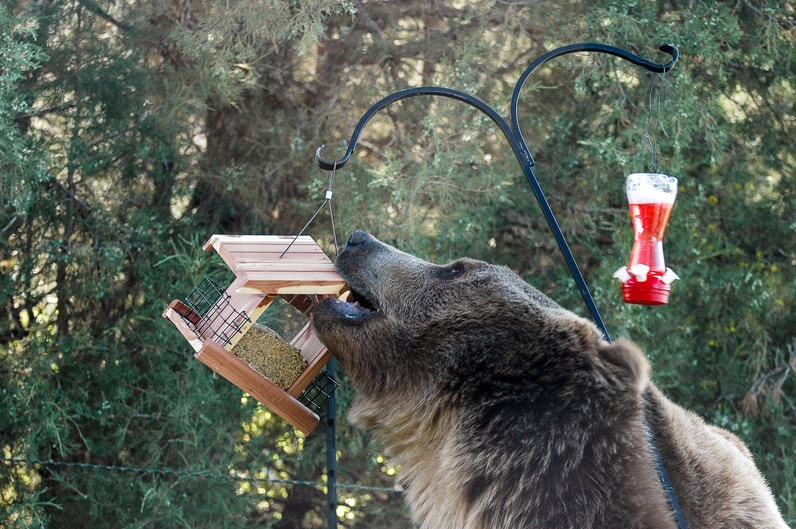
Children and pets are at risk if hungry bears become habituated to seeking food from our homes, and it endangers the bears too: problem animals are likely to be shot. Thus, in spite of cold winters, hungry birds in bear country must go without their fatty balls.
We wildlife-loving stewards of nature must therefore reflect on whether our actions to attract wildlife to our gardens might have unintended consequences.
Understanding our purpose
If we are tempted to feed wildlife, before putting food out we should take a step back, and first consider what drives our motivation – and whether feeding is the only, best or even an effective way to fulfil that purpose: Do we definitely need to feed wildlife?
What animals do we want to encourage and what do they eat?
Whether we love birds, butterflies, monkeys, bushbabies or lizards (or all of them) they each have different needs – dietary and otherwise – that we should consider. How easily can our target animals already find the food they eat naturally in our gardens?
Do the animals need our help to find food?
Unlike places with frosty winters when many plants fall dormant, Zanzibar has a year-round growing season. There is always something flowering, fruiting or in seed. Do the animals need us to supplement their diets? Are there other ways we can improve food availability, such as by cultivating their natural wild food species?
Do the animals have other unmet needs?
Can the animals we want to help meet all their other needs in our garden, such as find refuge from predators, roosting sites, nesting materials, and clean water to drink? Food availability is not the only potential limiting factor, and by considering our landscape from an ecological perspective there might be more important interventions to make it a more attractive habitat for the wildlife we want to encourage.
Do we just seek close encounters?
To what extent are we pursuing a close encounter for our own pleasure? Wildlife encounters offer valuable education opportunities and memorable experiences for residents and visitors alike. This is an entirely worthwhile pursuit – but feeding animals might not be the only way, or even the best way to attract animals close enough to have meaningful encounters with them. In many ways, the more natural the experience the better!
Might feeding animals put them at risk?
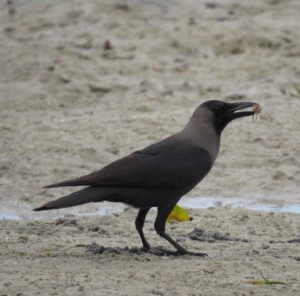
In Zanzibar, the first bird to arrive at a table of food left unattended will likely be a House Crow. These invasive pests are a grave threat to wild birds, spread disease and invasive plants, and steal chicks and chicken food. Any food put out for wild or domestic birds should be protected from thieving crows.
Even where we feed food the desired animals enjoy – is it good for them? Seeds might go mouldy (or germinate) very quickly in our hot and humid air. Fruits keep on the vine but disintegrate in the sun. And some food that people might be tempted to put out out is simply not good for animals – such as quantities of leftover rice or sugary desserts.
How can we ensure we don’t inadvertently cause harm to the animals we are trying to help?
Monkey Business: A Case Study
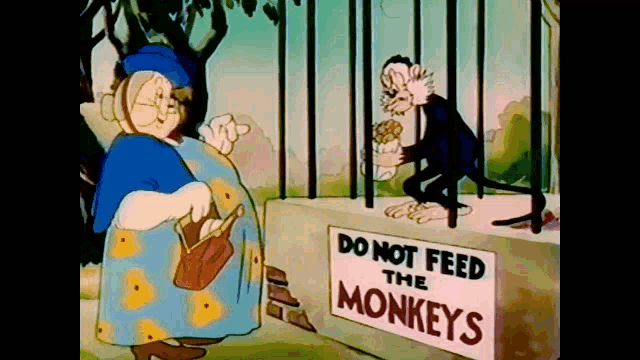
Monkeys may steal our hearts – but we should not let them steal our breakfast!
Monkeys are our close relatives, and this means we can make each other sick if we get too close. The entire global population of Zanzibar Red Colobus Monkeys is restricted to Unguja alone. One deadly disease outbreak could wipe out the species for good.
Likewise, we are susceptible to monkey diseases ourselves, and many human epidemics are traced back to human-wildlife contact.
For our safety as well as theirs, we should keep at least two metres from monkeys (especially if we’re feeling sick), and never touch them, however close they approach us.
Hand-feeding monkeys might seem adorable in a hotel garden, but habituated monkeys risk becoming serious pests. Troops of pest monkeys steal breakfast from hungry children, and strip trees of a whole harvest, costing people’s livelihoods. Families living hand-to-mouth can’t afford such losses. It isn’t fair or kind to anyone to risk provoking such conflict by teaching monkeys to take food from us: to do so places the animals we care about at risk of persecution.
These clever monkeys in India extort food from tourists by stealing valuable phones and sunglasses, and holding them hostage until an adequate food ransom is paid!
To survive, animals must learn to forage in the wild. Monkeys learn from their elders which fruits and leaves are good to eat and which they must avoid. If they only learn to get food from us, they will not be able to survive in the wild nor pass on survival skills to their own young.
Attracting wild animals naturally
So while it might be better not to feed wild animals, this need not prevent us from developing close and supportive relationships with our wild neighbours nor from sharing fantastic wild encounters.
Here are some natural alternatives to direct feeding to attract wild animals to your garden.
Feed animals naturally – grow wild food!
The good news is that we can grow food for wildlife. If we plant non-commercial species it will reduce the risk of conflict: we can attract animals to our space without tempting them into our houses and to harvest all our own food. Wild fruit trees teem with animal life. Sunbirds love red flowers. Blooming Grewia buzz with pollinators that in turn attract insect-eaters. Seedheads attract other birds (so delay dead-heading). Growing the right caterpillar food plants will give you a garden filled with butterflies. Native figs attract foraging birds and monkeys to their low-growing fruits– giving us fabulous views. Bungo vines grown around your sundowner terrace will attract bushbabies. Check out our growing collection of curated checklists of native plants to grow to create space for nature.
Provide shelter
With the harassment of crows and other predators, many of our animals are limited by the availability of shelter – for themselves and their own food species. Thus, embrace a tangled corner where creepers climb and thorns twist, to create refuge for the birds, lizards and other wild friends to roost, nest and forage.
Provide water
Surface drinking water for animals is relatively scarce on Zanzibar’s porous limestone coral rag rock. A small pond with rocks to perch on will let all kinds of wildlife bathe and drink. If you don’t have space for a pond, a bird bath is enough for many animals and can be emptied and cleaned daily to keep mosquitoes from breeding in it. Water for animals should be located in a quiet place, ideally near to bushes where animals can shelter from predators.
A bubbler or small fountain to disturb the water surface of your pond is enough to stop mosquitoes from breeding in it. Surprisingly, even a still pond can reduce mosquito numbers overall if it’s deep and clean enough, by creating habitat for predators of mosquito larvae such as voracious dragonfly nymphs and amphibian populations. Mosquitoes will breed in the tiniest accumulation of water, even in a leaf if that’s all there is. But if they lay their eggs in permanent water our predators will devour them.
Build hides (blinds) and screens
You can improve your view of visiting wild animals by hiding from them. Create space where you can sit in the shadow of a tree or makuti roof, with a trellis of vines to conceal you, and sit quietly overlooking the place the animals hang out: they will come closer.
Zoom in
When you can’t get close physically, improve your optics – watching wildlife through binoculars, a telescope or telephoto lens will give you fantastic views of even distant wildlife without disturbing it.
Underwater
While this article is focused on terrestrial wildlife in our modified garden landscapes, the issues are just as applicable to our delicate marine life too. Chumming is common practice by artisanal, commercial, or sport fishing practitioners, to attract fish into their gear. It is understandably tempting for wildlife watchers to do likewise, but it is not good practice for wildlife observation and it is not good for marine ecology. We are indebted to the Green Fins programme for their excellent poster to explain why it matters for us.

Final thoughts
Adopting the precautionary principle, seeking to minimise harm in the absence of complete information, I conclude that as a rule of thumb in Zanzibar we can usually find better alternatives to directly feeding wildlife.
Too-close contact with us can be dangerous for much wildlife – it spreads disease, disrupts wild foraging, attracts predators, and encourages problem behaviour likely to trigger persecution.
But I hope I have shown how we can create food-rich gardens and landscapes which will feed wildlife and meet other needs too: providing shelter, water, and the opportunity to develop foraging skills in natural ecological context – and give us opportunities for authentic encounters with wild animals exhibiting natural behaviour.
So thank you very much for reading my thoughts. I would particularly like to extend a warm thank you to my wise ecological restoration friends for their expert insight on the nuances of this important issue. I imagine we will continue to revisit the questions raised, especially for endangered species whose natural foods are becoming harder to come by in the wild.
If this article has been helpful and you’re in a position to support the education mission of this website, please consider chipping in to buy me a “cup of coffee” through ko-fi.com/NellH (or in person!)
See you in the wilderness!

Meet the team
Nell Hamilton M.Sc. is a coastal ecologist, ecological gardener & nature storyteller, and the founder of www.zanzibarwildlife.com.
Nell is available for teaching, training and workshops, and freelance & consultancy through www.OurGreen.Company. She also writes at Ecologue. Her Shorebird Poster ID Guide and Lunar Calendars are in stock at Green Market in Hurumzi (near Emerson Spice) and other local stockists.
“Be the change you want to see in the world.”
If you are in a position to support our work to share knowledge and understanding of Zanzibar wildlife through this site, we are developing a content sponsorship programme. Meanwhile, if you find this interesting or helpful, donations at www.ko-fi.com/NellH are extremely appreciated.
You can also help us keep records up to date by logging your wildlife sightings on iNaturalist, and you can connect with us and join the conversation on Facebook and Instagram.
To read this site in Kiswahili click here.
